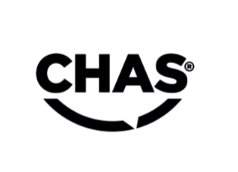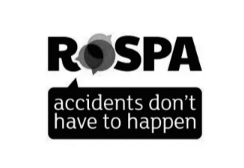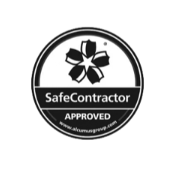phs Group has acquired Citron Hygiene UK - we’re here to support you. Read our customer FAQs and find our contact details here.
Flooring is one of the most important features in any space - whether it’s a home, office, or commercial setting. Flooring can also be an expensive purchase for your business, which is why it’s important to protect it – which is why the right matting is crucial. From muddy boots to pet paws and everyday foot traffic, mats help preserve the condition of your floors. But when it comes to rubber flooring matting and other types of mats, how do you know what’s best - especially for delicate surfaces like Cardine, laminate, and wooden floors?
Our latest post breaks down the differences and benefits of rubber flooring matting versus other options, helping you decide what works best for your specific flooring type.
What is rubber flooring matting?
Rubber flooring matting is a type of mat made from natural or synthetic rubber, designed for durability, slip-resistance, and floor protection. Available in various sizes, textures, and thicknesses, these mats are commonly used in high-traffic areas like kitchens, entrances, gyms, and workshops.
Many styles come with non-slip properties and some feature floor mats rubber backed for extra grip. You’ll also find large rubber-backed floor mats designed to cover expansive areas.
What are the benefits of rubber flooring matting compared to other mats?
Rubber flooring matting has several advantages that make it a popular choice:
- Durability
Resistant to wear and tear, ideal for high-traffic zones.
- Slip resistance
Reduces the risk of accidents, especially in wet or oily areas.
- Shock absorption
Comfortable underfoot and reduces noise.
- Easy to clean
Most rubber mats are water-resistant and simple to wipe or hose down.
- Grippy backing
Rubber-backed mats stay in place better than many alternatives.
However, not all mats are suited for every type of floor. A rubber mat may have its benefits, but it’s not always suitable for all floors.

Rubber flooring matting versus other flooring: Which is best?
The type of flooring you choose will have different care needs, from cleaning to protection. Understanding the properties of each flooring type can help you decide if a rubber mat is truly suitable for you. Take a look at these different flooring types to understand the differences:
Cardine Flooring
Cardine (or Karndean) flooring is a luxury vinyl tile (LVT) that mimics natural wood or stone. It is designed to be highly durable, but it can be sensitive to staining and adhesive residues.
Are rubber backed mats ok with Cardine flooring?
Generally, it’s advised to avoid mats with a rubber or latex backing directly on Cardine floors. These materials can sometimes react with the surface, leading to discolouration or staining. Instead, opt for mats with a vinyl-safe backing or place a protective layer between the mat and the floor.
Laminate Floors
Laminate is another popular, cost-effective flooring choice that mimics hardwood but includes a sensitive wear layer. Many are designed to be waterproof to use in high traffic areas as well as kitchens and bathrooms.
Can rubber-backed mats ruin laminate floors?
Yes, they can. Over time, rubber-backed mats may trap moisture or leave a chemical residue that damages the laminate’s topcoat. Mats with a breathable or non-staining backing are generally safer for laminate.
Wooden Floors
Hardwood floors are a beautiful addition to any space, but they need careful protection from dents, scratches and most importantly - moisture.
Why is my wooden floor wet under rubber backed mat?
This is a common problem with wooden floors and rubber-backed mats. The mats can trap moisture from spills, cleaning or humidity, leading to damp patches or even mould beneath the mat. The mat creates a seal that prevents the floor from ‘breathing’. Consider woven or ventilated mat options that allow air circulation and let moisture evaporate.
How to make the best matting choice for your needs
To choose the right matting for your floor type, follow these quick tips:
Know your flooring type
Whether it’s Cardine, laminate, or hardwood, read the manufacturer’s care guide before placing any matting. Consult them if you’re unsure if the matting is safe to use.
Check the backing
Look for labels that say, “safe for vinyl,” “non-staining,” or “breathable.”
Consider usage
High-traffic zones need durable options, which is when large rubber backed floor mats come in handy (with a protective barrier underneath if needed).
Keep it clean and dry
Regularly lift your mats to clean beneath them and allow the flooring to breathe.
Use a rug pad
If you're worried about damage, a protective underlay can act a safe buffer between the mat and your floor.
Protect your flooring with mats from phs
Whatever your flooring type, it’s important to find matting that can protect it. At phs, we supply a range of mats to help you find the ideal match for your floor. From workplace office mats to washroom mats, we can make recommendations based on your flooring type, helping you preserve your flooring and protect your workplace.
Explore our floor mat solutions or contact us today for more information that can help you choose the best mats for your needs.



































